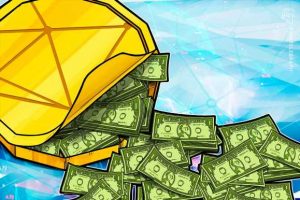How will SORA’s Price Perform After the Launch of Polkaswap?

In a recent investment thesis on the coin Sora (XOR), the Cointelegraph Research team explored the current state of the DeFi industry, highlighting the biggest challenges that the industry is facing right now. The two largest problems are scalability and the segregation of multiple blockchains that exist independently and cannot share information between one another. The Polkadot project tries to solve both these bottlenecks by offering cross-blockchain transfers of any type of asset. They also provide transactional scalability by spreading transactions and validation across multiple parallel blockchains.
Download the full investment thesis on SORA (XOR) here.
Polkadot aims to ameliorate two pivotal elements of the DeFi economy, namely automated market makers and decentralized cryptocurrency exchanges. A connection to Polkadot through the SORA Network allows the new Polkaswap decentralized exchange (DEX) to feature much higher transaction output compared to its rivals while maintaining reasonable transaction fees. As of March 22, Ethereum’s largest DEX Uniswap registered $1.08 billion in daily trading volume while Binance Smart Chain’s largest DEX Pancake swap registered $860 million. One of the largest centralized exchanges, Coinbase, registered $1.7 billion. There is definitely demand for trading infrastructure, and Polkaswap is likely to gain traction as Polkadot’s main DEX.
The Sora project is not limited to just another blockchain in the Polkadot ecosystem, however. Rather it sets up the ambitious goal of becoming a supranational monetary system that will compete with contemporary governmental monetary systems. In order for that to be possible, Sora will require mainstream adoption for its XOR coin as a means of payment. Instead of being a stablecoin that is pegged to a fiat currency’s value, Sora’s price is determined by an elastic supply controlled by a smart contract. This means that when the price of the XOR token goes up and reaches some critical level, buyers can purchase newly issued tokens directly from the “Buy” smart contract rather than through the secondary market from the circulating supply held by existing holders. Conversely, if the price drops, then users can sell the tokens to the “Sell” smart contract. This algorithm regulates the number of tokens in circulation, and therefore reduces price volatility.
Furthermore, the XOR bonding curve is different from ones used by other DeFi projects, since instead of over-collateralization, such as 150%, the XOR bonding curve is at close to 100%; it is fully collateralized by the assets used to buy XOR from the smart contract. At the same time, it is not a loan, because when XOR is purchased, the asset that served as a payment is given away. Therefore, the XOR bonding curve smart contract does not inflate the money base nor does the XOR buyer risk collateral depreciation or liquidations as is the case with the digital assets locked up in DAI collateralized debt positions.
To learn more about the SORA network and the two other coins in this network, PSWAP and VAL, download the report to get the full scoop.
Source: Read Full Article
